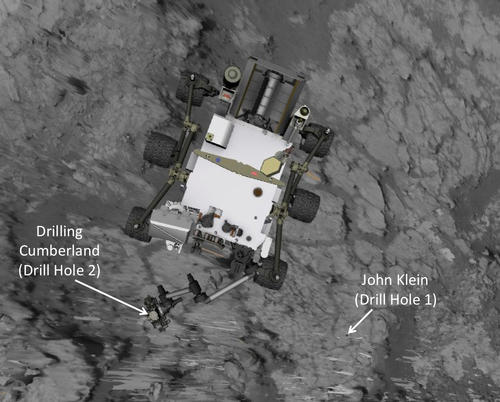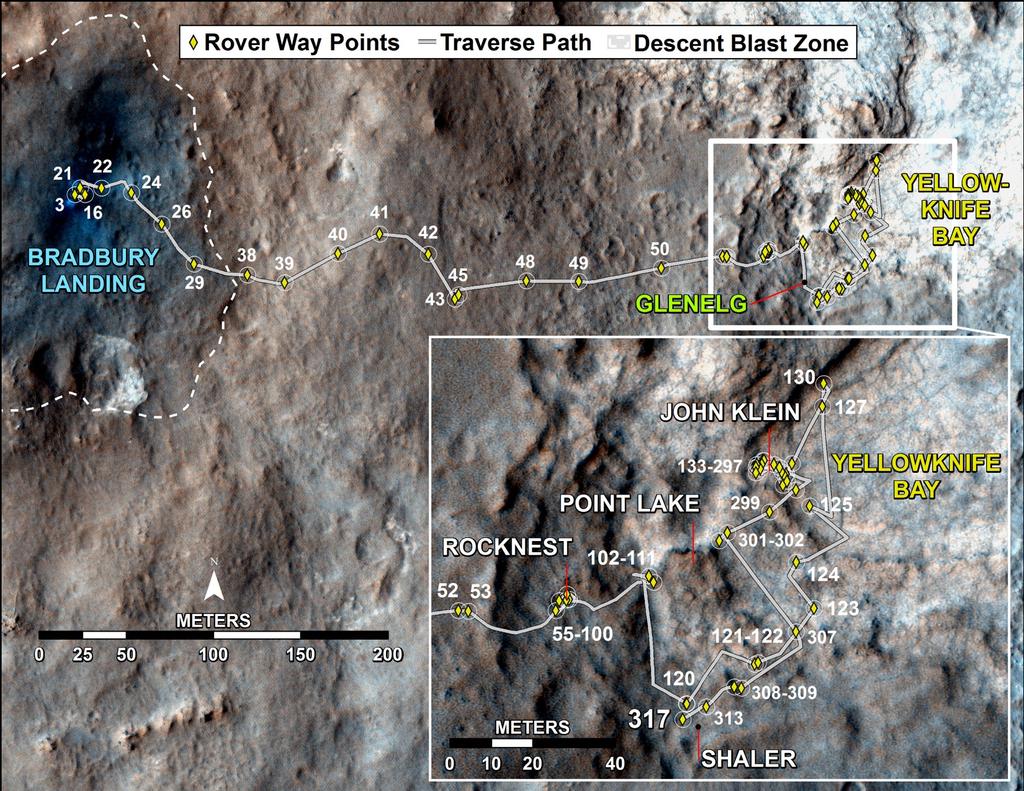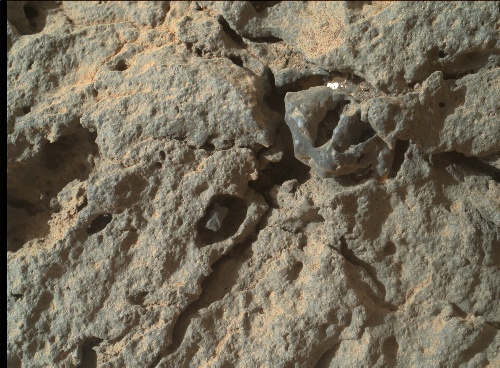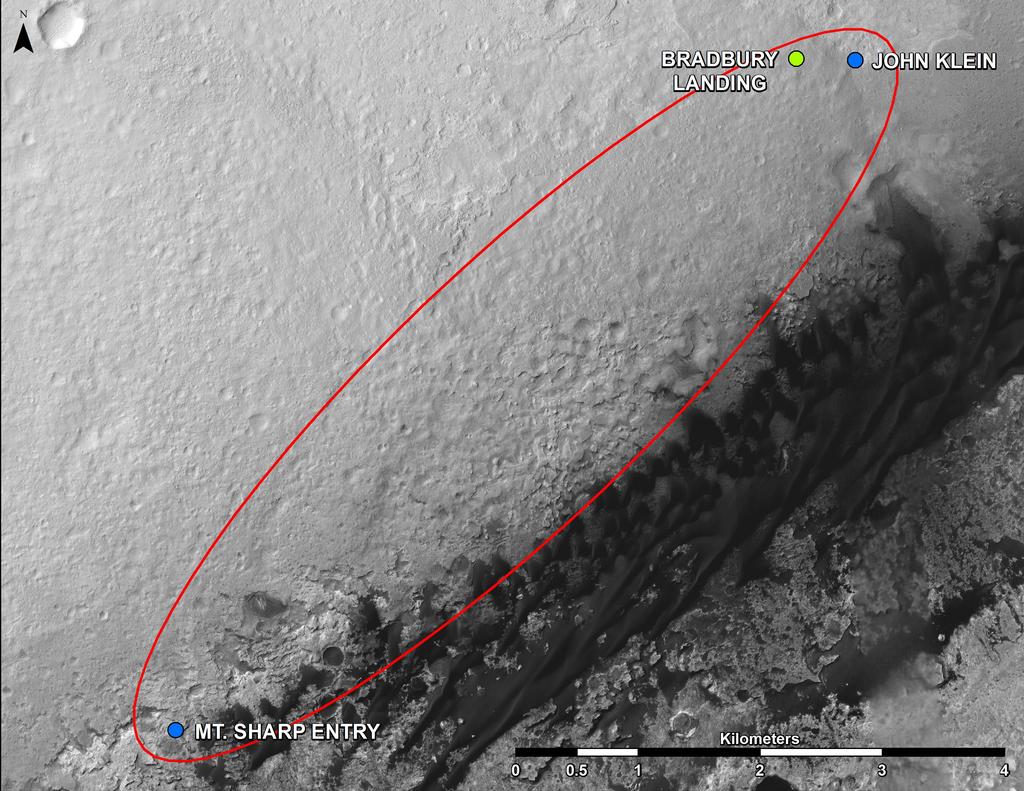My, my what a busy month this has been for me! Fieldwork in the middle of nowhere and exams (and plenty more heading my way! Yikes!). But that's science for you. Tiring but always a joy to perform. Just like our intrepid rover and her hardworking team!
 |
My colleagues and I in the town of
Mpwapwa central Tanzania posing for a shot
after completing medical fieldwork
(credit: Monica Shayo) |
Speaking of which, this just leaves me with 34 sols worth of adventure to review! We last left her when she was wrapping up analytical work at the Cumberland work area.
 |
A computer model of Curiosity depicting its sol 274
position next to Cumberland (NASA/JPL) |
Afterwards, it was announced in a
press release on June 6 that the team will now focus on long distance drives that will take the rover nearer to the mission's intended target; Mount Sharp aka Aeolis Mons. However that doesn't mean that all side shows will be ruled out for close examination. Anything that seems worth the time might be examined. Hence, it is difficult to tell when the rover will start treading the slopes of the mountain.
Departure from the Glenelg area took place on sol 295 starting with a 6.13m drive. Another drive followed 2 days later totaling almost 20m. The next few sols included lots of 2m drives up to sol 301 when the rover finally reached an intended target of investigation; Point Lake.
 |
| A map showing the progress made by Curiosity up to sol 317 (NASA/JPL/UA) |
Point Lake is quite interesting because the rocks don't seem to be as straightforward as first impressions suggest. On the one hand the rocks contain holes, suggesting vesicular basalt rock i.e. igneous rocks. On the other hand there are signs that suggest a sedimentary history including raised rims in some of the holes and a cluster of pebbles at the bottom of the step-like outcrop that may be have been eroded out of the parent rocks, leaving the tell-tale holes.
 |
| Sol 317 navigation mosaic of Point Lake (the cliff-like outcrop to the left side) (NASA/JPL/mosaic by Abraham Samma) |
The sedimentary picture becomes clearer at the bottom of the outcrop which seems to be softer than the upper portion of the outcrop. It could be basalt overlying sedimentary rock, who knows?
 |
A mosaic showing details of Point Lake. The image has been
white balanced to make the scene appear as it would if it
were shot on Earth. The scale bars are 50cm. A full resolution version is here. (NASA/JPL/MSSS) |
The next few sols were dedicated to arm work on the rover which was a little complicated because of the orientation of the outcrop. Nevertheless, the rover did manage to conduct excellent MAHLI imaging of the Point Lake rocks.
 |
MAHLI image taken on sol 303. The lens of the camera was positioned
no closer than 15cm away from the rock face. Notice the holes some of
which appear to contain eroded out pebbles. (NASA/JPL/MSSS) |
Afterwards, the rover logged around 68.65m and reached another outcrop called Shaler on sol 317 which is actually my personal favourite because of its fine layerings. It was passed over back then on sol 120 on the way to Yellowknife bay but now the science team appear to have reached a decision that Shaler requires more study.
 |
| A white balanced mosaic showing Shaler. The images were taken by the rover during sol 120 (NASA/JPL/MSSS) |
 |
| Sol 317 Mastcam left eye view of Shaler's layers (NASA/JPL/MSSS/mosaic by Abraham Samma) |
Shaler is said to have more evidence to support the prevailing view that an ancient stream may have existed in the rover's immediate area of study in the remote past. So examining it now will definitely produce good science. Arm activity has been scheduled for the next few sols (though there could be one day of delay due to concerns about the rover's stability for arm deployment) including MAHLI imaging of Shaler which should be coming down even as I write this review. The APXS instrument will also be in use during this period. Shaler is expected to be the last stop before the rover starts trekking to the 'entry point' into Mount Sharp. The entry point lies a few kilometres away from the rover because the team wishes to avoid any unnecessary contact with the black sand dunes that hug the slopes of the mountain that may hamper the rover's progress if not hinder it completely.
 |
Orbital image from MRO's CTX imager showing the area (area within the red ellipse) Curiosity
will probably traverse before it gets to the entry point onto the slopes (NASA/JPL/UA) |
And that's it I guess for the review. I've certainly gotten myself up to speed and I hope you have too dear readers. Stay curious!









No comments:
Post a Comment